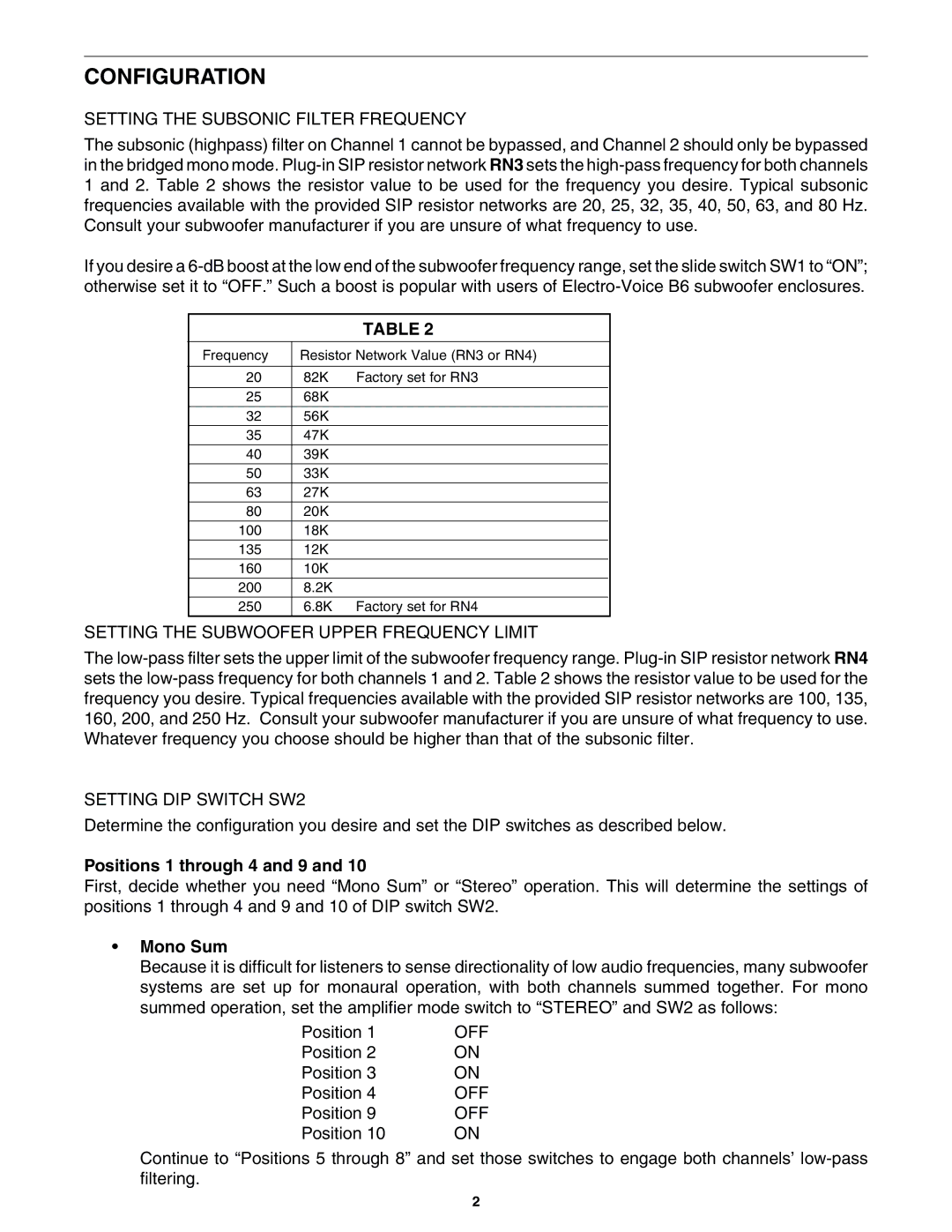SF-1, SUBWOOFER FILTER specifications
QSC Audio SF-1 Subwoofer Filter is an innovative solution designed to enhance the audio experience in various settings, from live events to permanent installations. Tailored especially for installations that involve subwoofers, this filter serves a critical role in optimizing low-frequency performance, ensuring clarity, punch, and depth in the audio output.One of the primary features of the SF-1 filter is its adjustable cut-off frequency. This allows sound engineers and users to fine-tune the filter settings according to their specific acoustic environment and preferences. Whether being used in a club, theater, or concert hall, the flexibility to set the cut-off frequency enables optimal integration with other system components, allowing for seamless sound reproduction.
The SF-1 is engineered with cutting-edge technologies that help reduce distortion and enhance the overall fidelity of low-frequency sound. Utilizing advanced digital signal processing (DSP), the filter can accurately manage the dynamics of low-end audio, resulting in a more controlled and impactful low-frequency response. This is particularly beneficial for subwoofers, as it prevents muddiness and ensures that bass notes remain clear and distinct even at high volumes.
Another notable characteristic of the QSC SF-1 is its robust build quality, which is essential for both touring and fixed installations. The unit is designed to withstand the rigors of regular use while maintaining reliable performance. Its compact size makes it easy to integrate into various setups without occupying excessive space.
Additionally, the SF-1 offers intuitive controls, making it user-friendly for both seasoned professionals and those new to sound engineering. The interface provides clear indicators for settings, allowing quick adjustments during live sound scenarios or installations.
In conclusion, the QSC Audio SF-1 Subwoofer Filter stands out as a powerful tool for managing low-frequency sound. Its adjustable cut-off frequency, advanced DSP technology, robust build, and user-friendly interface combine to create a versatile solution for any audio application. By ensuring enhanced audio clarity and performance, the SF-1 filter continues to be a valuable asset in the professional audio community, elevating the listening experience across various environments.
